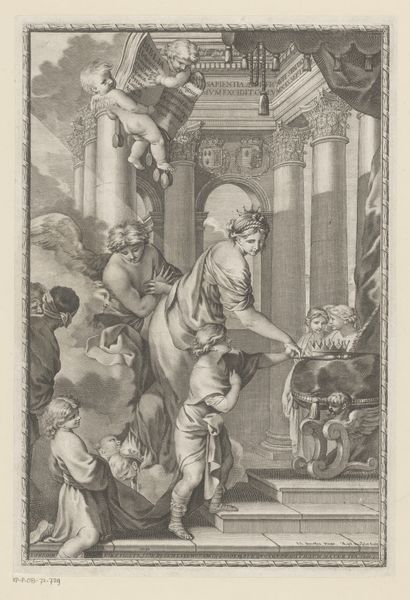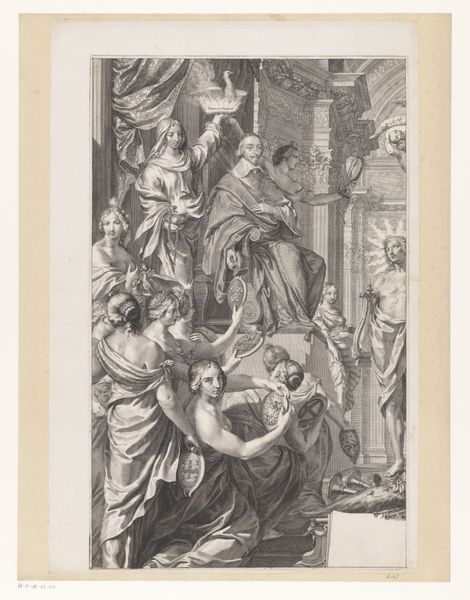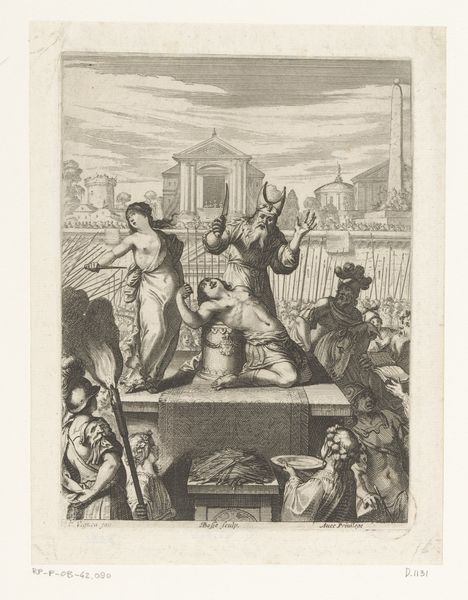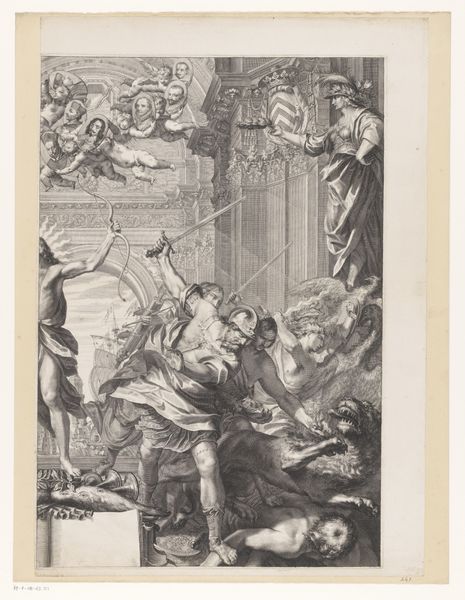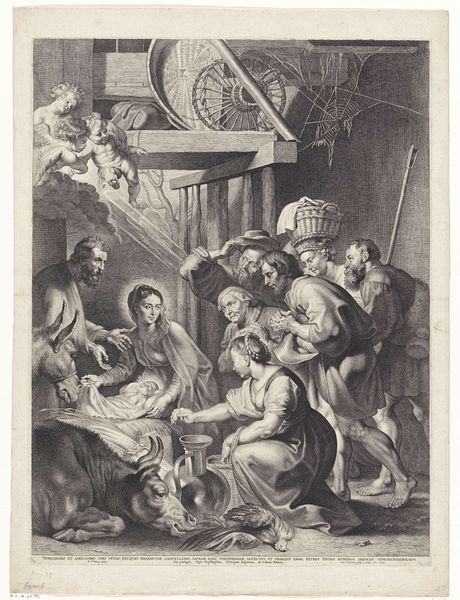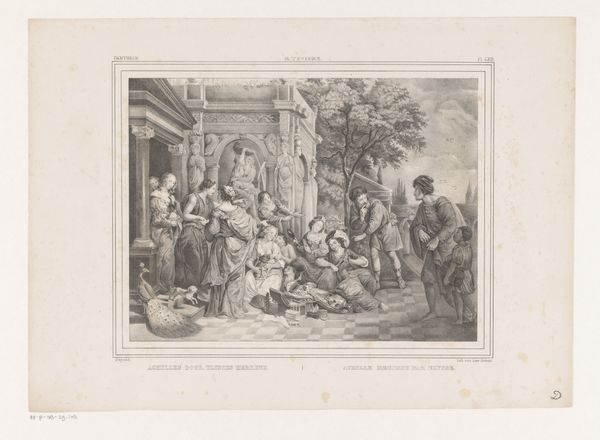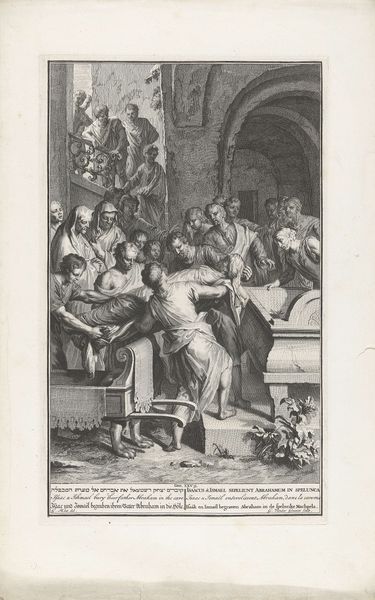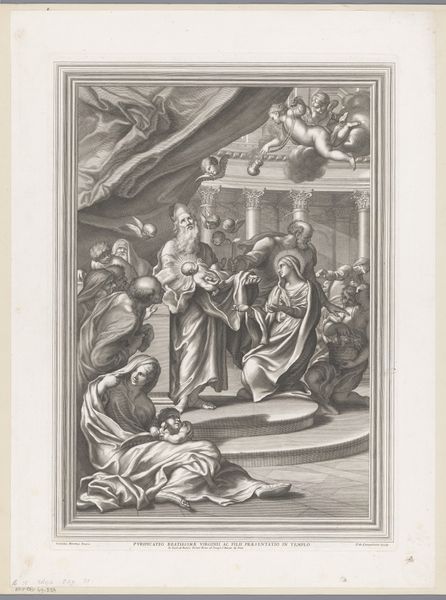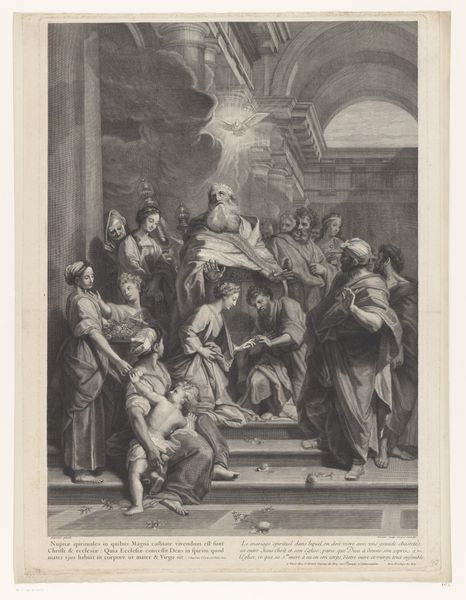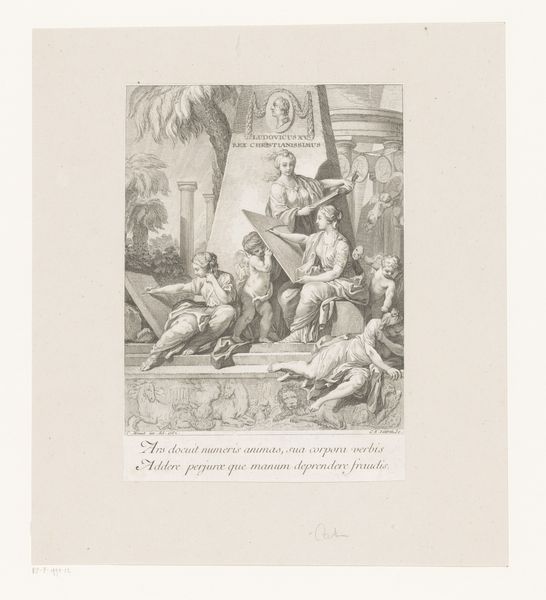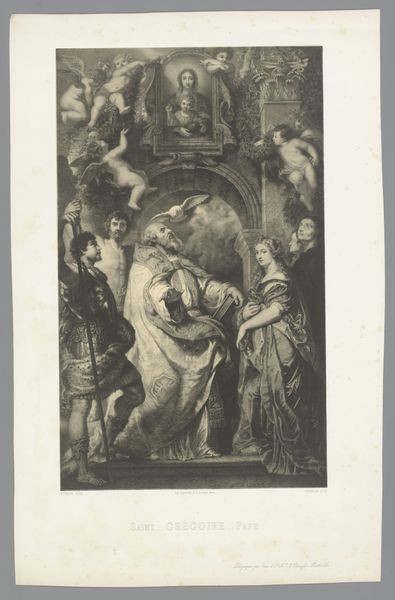
print, engraving
#
portrait
#
baroque
# print
#
old engraving style
#
figuration
#
history-painting
#
engraving
Dimensions: height 559 mm, width 385 mm
Copyright: Rijks Museum: Open Domain
Editor: Here we have Etienne Picart’s “Adoration by the Shepherds,” an engraving dating somewhere between 1642 and 1721. It has a clear Baroque flair to it, with dynamic movement implied across the picture plane, rendered in this tight, intricate print style. What stands out to you about it? Curator: Immediately, the formal composition arrests the eye. The scene is carefully constructed, framed by classical architecture which contrasts starkly with the humble subject matter. Note the receding space, cleverly created through the lines of the engraving and the varying tones, pushing back towards that background landscape. Editor: I see what you mean! There is a definite separation of planes created by the skillful light and shadow play. Curator: Exactly. Consider too, how the artist has used line weight and density to delineate forms. The figures in the foreground are rendered with greater detail, giving them a sense of immediacy and presence, while those further back appear more ethereal. Do you observe any symbolism conveyed through the use of structural elements? Editor: It’s interesting how the classical ruins are literally crumbling above the holy scene, while the holy family remains stable in their simple stable. Is that intentional? Curator: The artist has positioned these compositional elements deliberately to produce precisely that effect, don’t you agree? How might one deconstruct it according to its arrangement of forms? Editor: So, moving past subject matter, it is the conscious organization of elements that leads the eye and helps us understand the narrative. I had not considered ruins can suggest religious commentary. Thank you! Curator: Precisely, we find true insight in the interplay between form and idea.
Comments
No comments
Be the first to comment and join the conversation on the ultimate creative platform.
